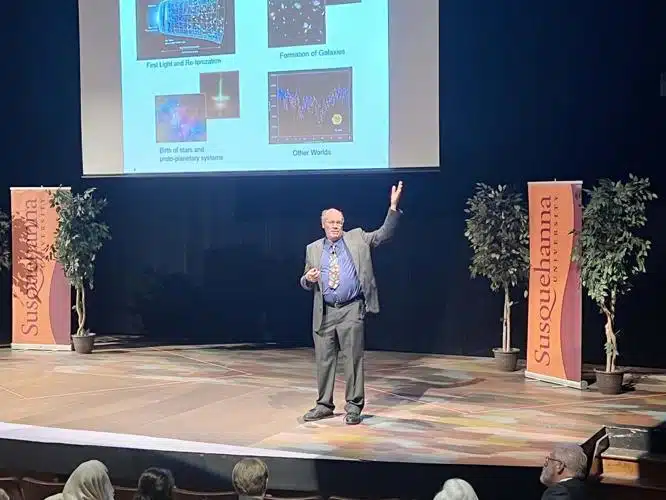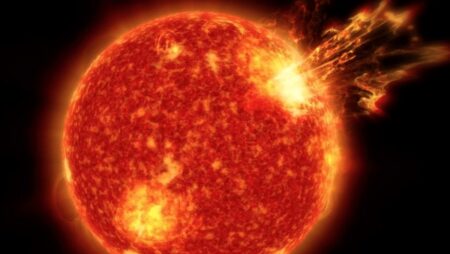
Selinsgrove- Micheal Davis, an engineer at NASA, gives his glowing approval of the James Webb Telescope, during Monday’s annual Claritas Distinguished Lecture in the Sciences at Susquehanna Degenstein Center Theater.
The session, attended by the students and faculty of Susquehanna University, was excited at Davis’s presence as the deputy systems engineer of the telescope and as a representative of NASA.
“The James Webb Telescope works, and it works, perfectly,” said Davis, as he addressed the crowd. As the deputy mission systems engineer, Davis is entrusted with the responsibility of ensuring the accuracy and fulfilment of over 30,000 day-to-day requirements concerning the telescope, especially as it is now actively in orbit. According to Davis, the telescope employs infrared technology to view distant galaxies that emerged as a result of the expansion of the universe. These infrared capabilities, according to Davis, “allow us to penetrate and see through dusty regions”. However, the possibility of error was high, says Davis, as “there were 344 single-point failures that if any had occurred, we would have lost the mission early on,”
The double asteroid redirection test (DART) on September 26th was also discussed during the lecture. DART, is considered to be the world’s first of its kind for planetary defense; a small asteroid Dimorphus, was intentionally crashed into by a spacecraft, for the purpose of investigating a kinetic impact mitigation technique. This test was conducted to provide data on Earth’s defence against asteroid or comet-based threats. The images captured by the James Webb Telescope, according to The Associated Press showed rock and dirt debris darting off the asteroid and the crater that was left behind.
https://tdznkwjt9mxt6p1p8657.cleaver.live/india-pm-narendra-modi-perceives-technology/

Davis remarked, “The Webb Telescope was not made for this, but it can be used to support other missions like this” and called it “another handy tool to have in our pocket.”
When speaking about NASA and its future plans, Davis mentions the Nancy Grace Roman Space Telescope (set to launch in 2027) to administer a wide-field infrared survey. Davis also reflects on the knowledge gained from the telescope; “As we have learned with Webb, wherever you look you see something, there is always something to look at.” he said
The Telescope was launched on Christmas morning 2021, as NASA’s successor to the Hubble Telescope. It is currently considered to be one of the largest and the most powerful space telescope in existence. The telescope quickly gained popularity over the summer, with its breathtaking pictures of nebulas and planets of the solar system.
On October 7, the Webb Telescope’s infrared measurements, powered with the ultraviolet light imaging provided by the Hubble Space Telescope, helped astronomers to capture two galaxies in fascinating images (named commonly as VV 191).
Another notable successful collaboration with NASA’s Chandra X-ray Observatory proved the existence of never-seen-before shockwave heat gas of tens of millions of degrees surrounding the galaxies of Stephan’s Quintet. This shockwave, in particular, is created as the galaxies entwine through the others at 3 million kph. Despite being extremely powerful on its own, The James Webb Space Telescope may function at its full capacity when combined with other instruments.













